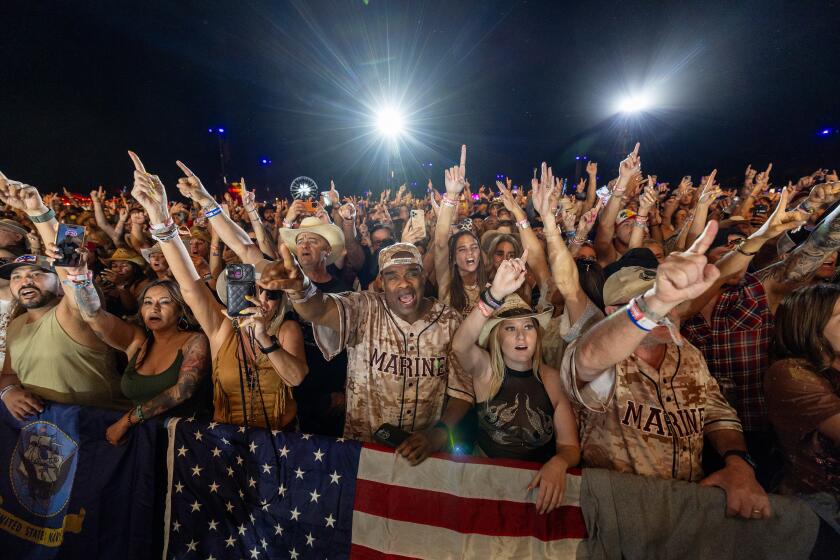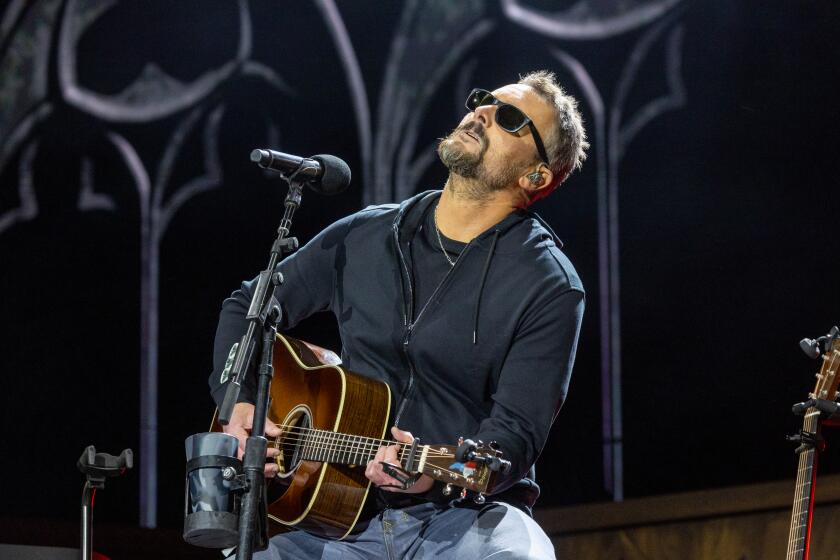R.I.P. Raphael Ravenscroft: More sax that made music pop
Studio musicians contribute immeasurably, and often anonymously, to the fabric of pop music, making it a rarity when one rises above that anonymity the way saxophonist Raphael Ravenscroft did as the result of his signature wailing solo on Gerry Rafferty’s 1978 hit “Baker Street,” a hook that is every bit as important to the song’s popularity as Rafferty’s voice and lyrics.
It also came not long before the era of the synthesizer dawned in the 1980s, when organic sounds of a wind instrument were largely abandoned, at least in terms of what surfaced on pop radio.
With that in mind, an in recognition of Ravenscroft’s passing, Pop & Hiss offers an entirely subjective selection of 10 other great saxophone moments in pop history:
Bill Haley & the Comets’ “Rock Around the Clock” (1954): The hit often cited as the Big Bang for rock ‘n’ roll doesn’t have a formal sax solo, but tenor saxophonist Joey Ambrose’s instrumental shouts in conjunction with the band’s electric guitar and steel guitar riffs midway through provides a musical punch to the solar plexus and gives the song that much extra heft.
The Chords’ “Sh-Boom” (1954): This doo-wop classic also is one of the foundational R&B hits that opened the door to rock ‘n’ roll with its bouncy, propulsive rhythmic groove under the singers’ liquid vocal performance. Tenor saxophonist Sam “The Man” Taylor’s screaming solo is the icing on the cake of this track. Taylor also contributed his deliciously honking sound to Big Joe Turner’s “Shake, Rattle & Roll,” Clyde McPhatter & the Drifters’ “Money Honey” and numerous other early rock and R&B recordings.
Little Richard “Long Tall Sally” (1956): While working in New Orleans in the early years of his career, wild man Richard Penniman, aka Little Richard, put together a band that included awe-inspiring tenor saxophonist Lee Allen, who played on most of his hits in 1956 and 1957. The solo in “Long Tall Sally” is one of the pinnacle sax moments during the birth of rock ‘n’ roll. Allen later moved west and became a member of the Blasters during the rockabilly/roots-rock scene the flourished in and around Los Angeles in the 1980s.
Gary U.S. Bonds “Quarter to Three” (1961): One of the great party records of all time benefits massively from saxophonist Gene Barge’s liberating sax work, which was a huge influence on Bruce Springsteen and E Street Band sax man Clarence Clemons, who made this song a regular part of their sets in the 1970s.
Aretha Franklin “Respect” (1967): Franklin had been languishing at Columbia Records singing smooth jazz-pop before she switched labels and joined Atlantic Records and began working with producer Jerry Wexler, who took her to Muscle Shoals, Ala., and recorded Otis Redding’s classic that became her career breakthrough. Saxophonist King Curtis leaped in for a solo break that rockets the track into another dimension with his emotionally explosive solo.
The Beatles “Lady Madonna” (1968): The Fab Four had used a horn section effectively before “Lady Madonna,” most memorably on “Got to Get You Into My Life.” For this Paul McCartney song, British sax man Ronnie Scott let loose a freewheeling solo that elevates the break between verses. His playing is subordinated on the original version behind vocals by McCartney, John Lennon and George Harrison, but a remixed alternate take included on the “Anthology 2” collection gives Scott’s sax greater prominence.
Junior Walker & the All-Stars “What Does It Take (To Win Your Love)?” (1969): As perhaps the only saxophonist-singer with a raft of pop hits, Walker has a trunk full of great sax work to his credit. The moaning solo that opens “What Does It Take” perfectly embodies the lyric’s yearning sentiment. His sax highlights virtually all of his recording sessions, with other standout solos in “Shotgun,” his rendition of “How Sweet It Is (To Be Loved by You)” and even a cover of the Guess Who’s “These Eyes.”
The Rolling Stones’ “Brown Sugar” (1971): The Stones were always enamored of American blues and roots music, so it was no big surprise when they welcomed Texas sax shouter Bobby Keys into the fold in the late ‘60s, and he still tours with The World’s Greatest Rock ‘N’ Roll Band when they hit the road. His playing is heard frequently in their late ‘60s and early ‘70s recordings, with the wailing “Brown Sugar” from the “Sticky Fingers” album being perhaps his finest moment. A close second: a rip-roaring solo in the breakneck speed “Exile on Main Street” track “Rip This Joint.”
Marvin Gaye “What’s Going On” (1971): Saxophonist Eli Fontaine thought he was just warming up for a demo run-through of “What’s Going On,” which constituted a fundamental shift in Gaye’s music from smooth, elegant and romantic Motown R&B to pointed sociopolitical commentary. But Gaye loved what Fontaine had played and kept it in the finished take. Gaye also got a terrific sax break from Motown session player Wild Bill Moore in the second single to be released from the “What’s Going On” album, “Mercy Mercy Me (The Ecology).”
Lou Reed “Walk on the Wild Side” (1972): It makes perfect sense that Reed would include a lascivious sax solo into his exploration of the wild and woolly streets of New York for his song in which “the colored girls go ‘do-do-do-do, do do do do,’ etc. The fact that this particular solo is played by Ronnie Ross, who had taught no less than David Bowie how to play sax, just adds to the appeal.
Carole King “Jazzman” (1974): King made her solo breakthrough with the gently introspective pop-rock of her “Tapestry” album in 1970, but she liked to kick up her heels musically and brought in saxophonist Tom Scott to personify the sound she celebrated in her 1974 song “Jazzman,” about a musician who “can sing you into paradise or bring you to your knees,” in lyrics written by David Palmer.
Joni Mitchell “Raised on Robbery” (1974): Tom Scott also was the session sax man du jour for Mitchell on her “Court and Spark” album, which remains one of the high watermarks of her long career. She’s always had a passion for jazz, but this rollicking track, produced by the Band’s Robbie Robertson, is about an adrenaline-fueled misadventure that’s a rock ‘n’ roll walk on the wild side.
Bruce Springsteen & the E Street Band “Born To Run” (1975): Rock was moving in a lot of directions in the mid-1970s when Springsteen crafted “Born to Run,” but the Boss channeled the spirit of early rock in this high-octane track that lets sax man Clemons do what he always did best: blow hard, and from the heart and soul.
Bob Seger “Old Time Rock & Roll” (1978): Singing a song written by George Jackson, Seger and the Silver Bullet Band were saluting early rock in this nostalgia-driven song that became a hit in its own right and ironically has come to be a favorite on oldies radio. The solo by saxophonist Alto Reed — the Silver Bullet Band’s answer to Clemons — is an indelible part of the recording’s throwback vibe to the days when sax played a key role in rock.
Katy Perry “Last Friday Night (T.G.I.F.)” (2010): After a long dry spell with little featured sax in mainstream pop, pop princess Perry brought the instrument back to the forefront, however briefly, with a spotlight role for saxophonist Lenny Pickett in her goofy “Last Friday Night” hit.
Lady Gaga “Edge of Glory” (2011): Gaga folded sax into two tracks on “Born This Way” album, and she drafted Clemons on both. She said she wanted sax for a sense of nostalgia in “Edge of Glory” and “Hair,” and said at the time “it’s really interesting, because it’s putting saxophone on this really huge electronic record.”
Follow @RandyLewis2 on Twitter for pop music coverage
More to Read
The biggest entertainment stories
Get our big stories about Hollywood, film, television, music, arts, culture and more right in your inbox as soon as they publish.
You may occasionally receive promotional content from the Los Angeles Times.







